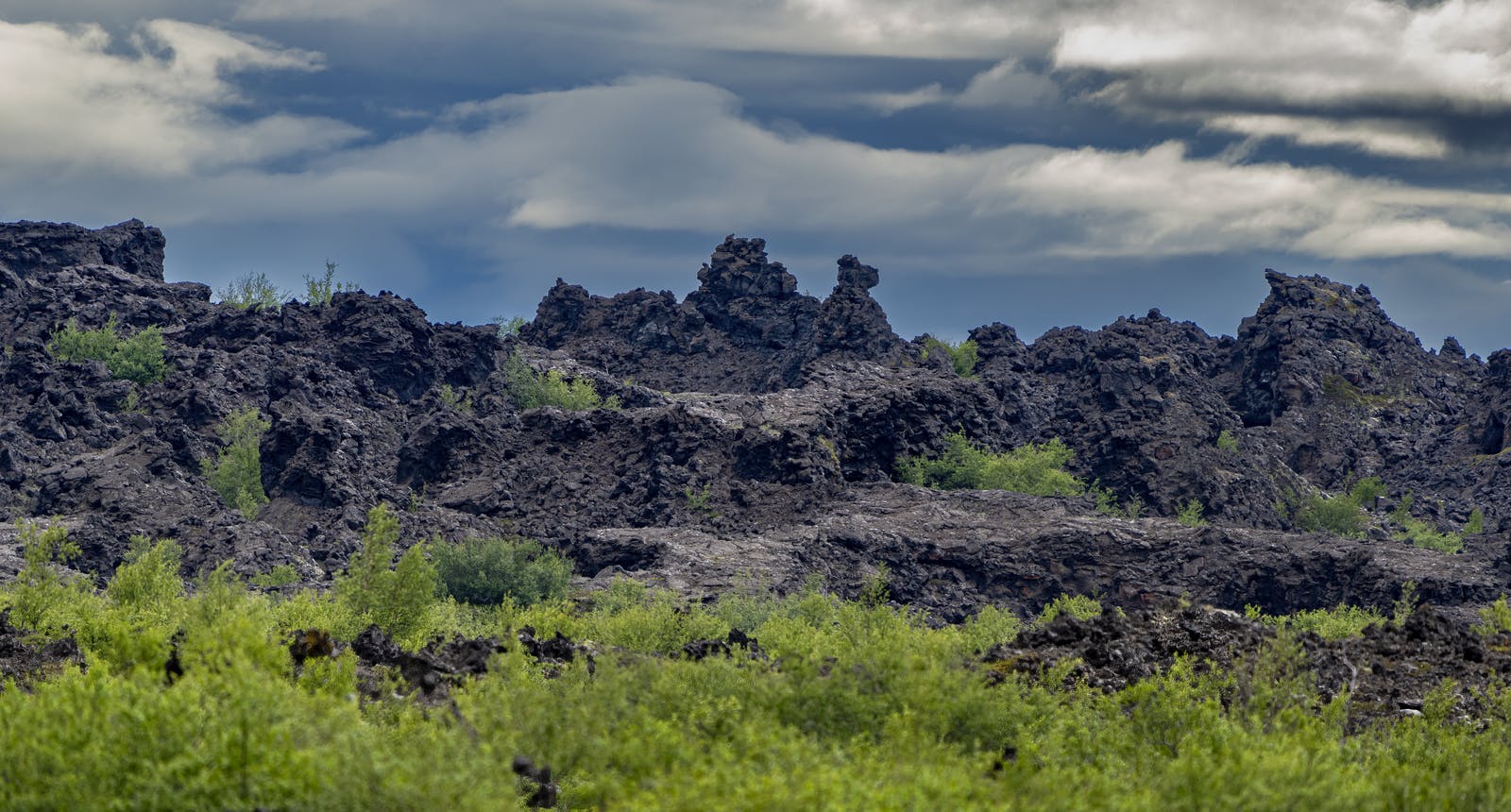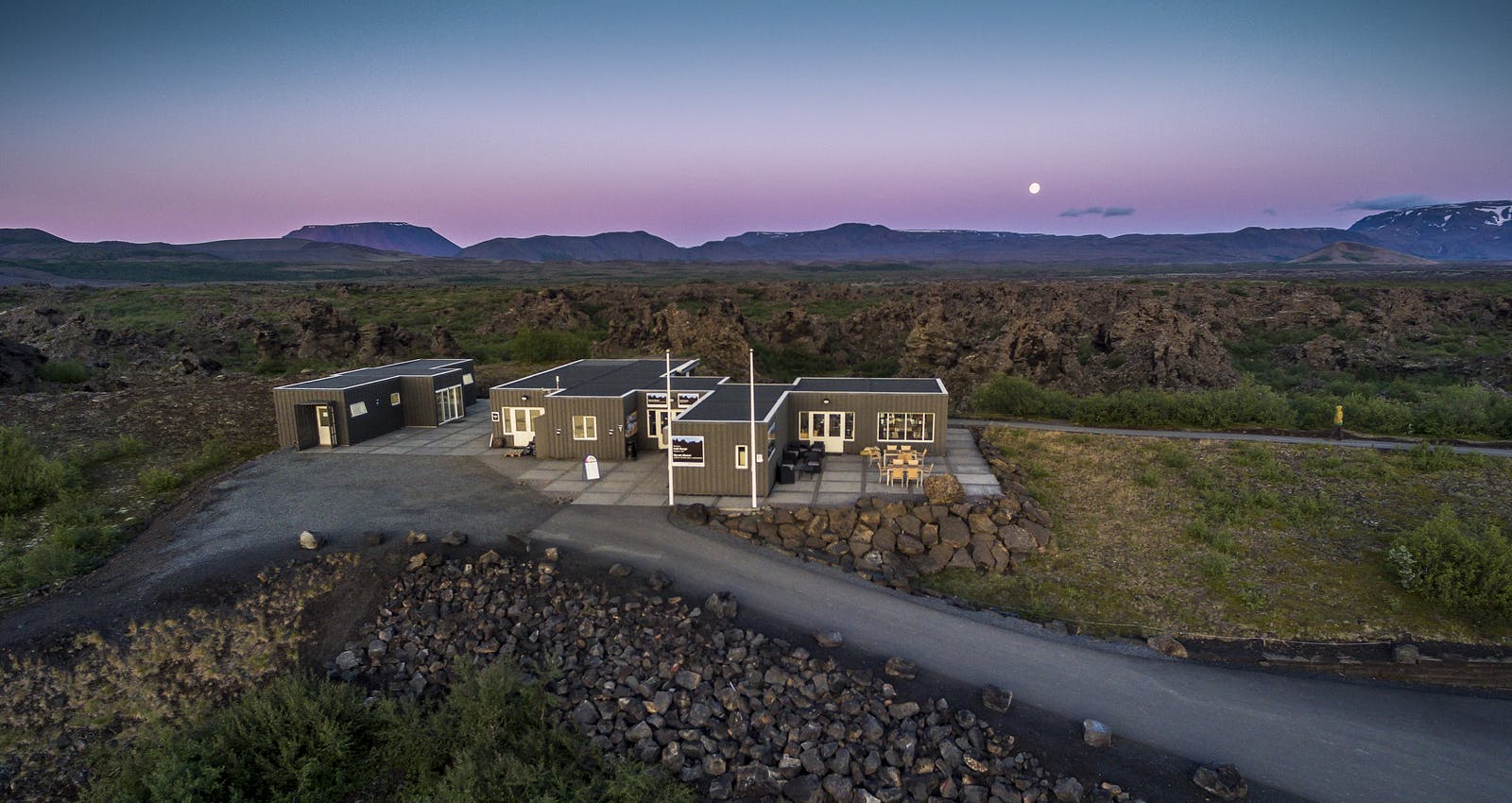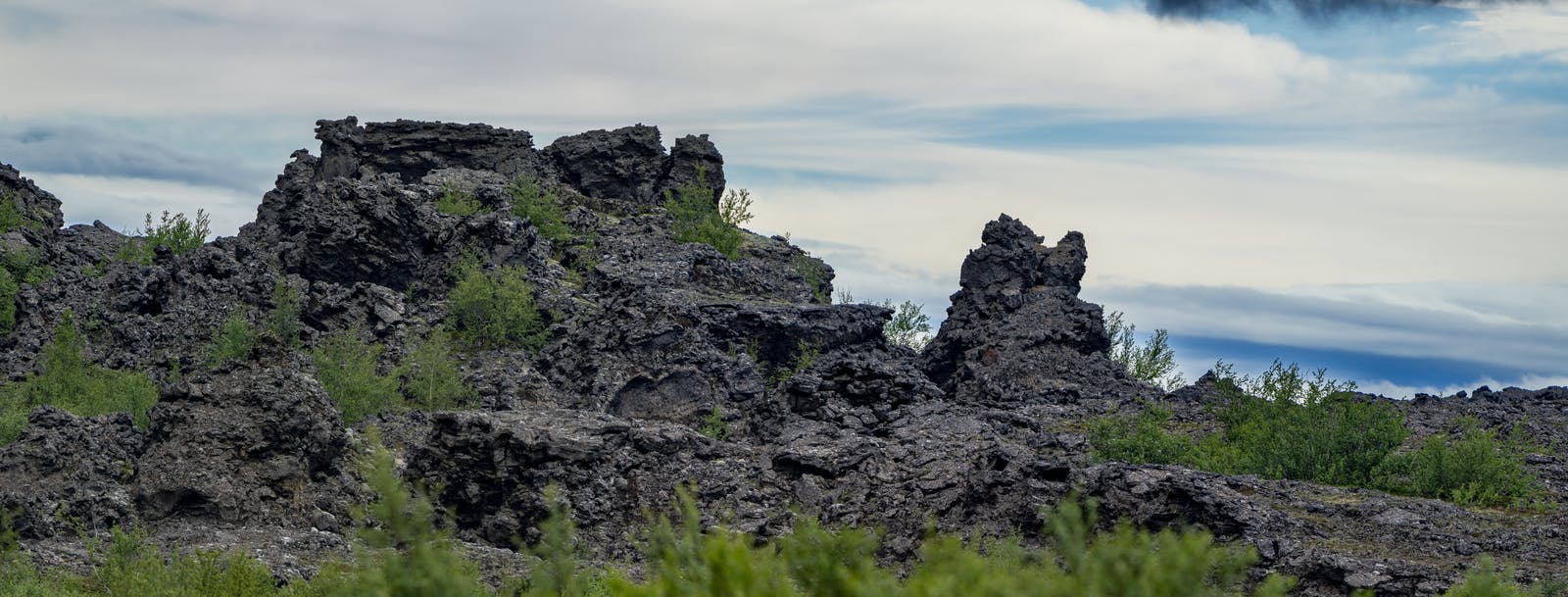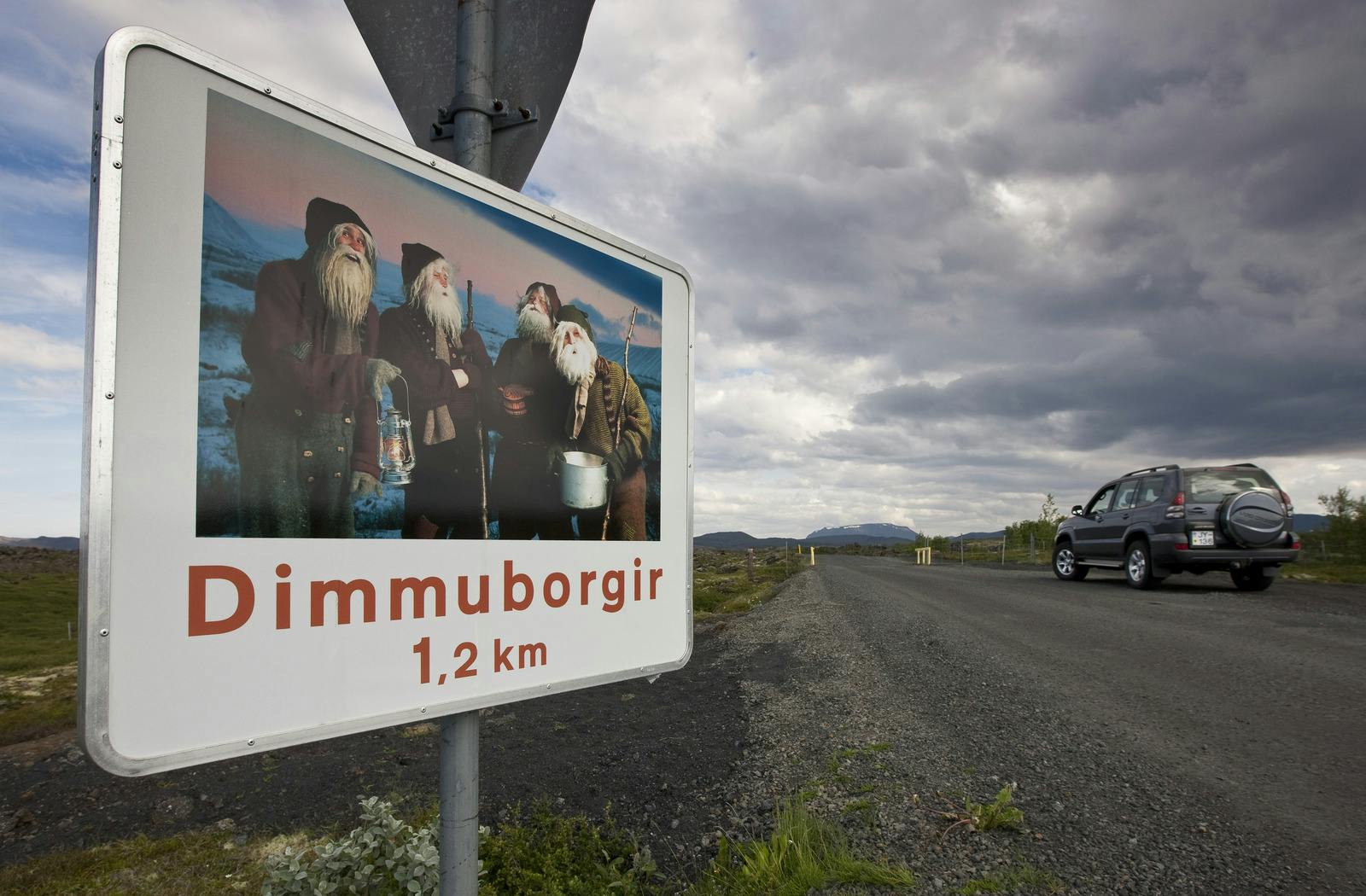
Guide to Dimmuborgir Lava Formations in Iceland
Nestled in the breathtaking landscapes of northeastern Iceland, the Dimmuborgir lava formations stand as a testament to the geological marvels that have shaped our planet over millennia.
Unlike typical tourist destinations, Dimmuborgir offers more than just aesthetic appeal – it provides a captivating window into the dynamic forces that have shaped Earth's crust. In this exploration, we will delve into the scientific intricacies of Dimmuborgir, unravelling the geological processes that birthed this surreal labyrinth of volcanic wonders.
Dimmuborgir is located in northeastern Iceland near Lake Myvatn. Specifically, it is situated in the lava fields just east of the lake. Reykjavik, the capital of Iceland, is approximately 480 kilometres (300 miles) southwest of Dimmuborgir. The site is accessible by road, making it a popular destination for tourists interested in exploring the unique geological formations and natural beauty of the region.
Formation and Composition

Dimmuborgir originated approximately 2,300 years ago during a volcanic eruption in a crater row in the region. The primary geological player in this spectacle is lava, molten rock that erupted from the ground and subsequently cooled, solidifying into the various formations we witness today.
The lava that birthed Dimmuborgir is of basaltic composition, a type commonly associated with volcanic activity. Basaltic lava is characterised by its low viscosity, allowing it to flow more easily than other types of lava. As the lava spread across the landscape, it was dammed up for a while, forming a pond of glowing magma.
Now, the pond's molten lava, or magma, underwent a process known as solidification. During solidification, the lava gradually transitioned from a molten state to a solid, forming diverse structures. Then suddenly, the dam creating the magma pond broke down, and the pond was drained out, leaving the solidified part like sculptures in the lava field.
One of the notable features of Dimmuborgir is the presence of lava pillars. These pillars formed as the outer layer of the lava flow cooled and solidified while the inner molten lava continued to flow. The solidified crust acted as a protective shell, allowing the inner lava to drain away, leaving behind the towering columns that now define the landscape.
Forces of Nature
Perlan Museum in Reykjavík has an exhibition dedicated to volcanoes, earthquakes and lava called Forces of Nature. Here, you will experience the immersive impact of volcanoes, earthquakes, and geothermal energy, engaging your senses to witness, hear, and feel the formidable forces of these natural phenomena.
Iceland showcases a rich diversity in volcanic activity, prompting researchers to categorise it in terms of "volcanic systems" rather than focusing on individual volcanoes. The island harbours 30 active volcanic systems, each boasting various types of volcanoes.
Caves, Tunnels, and Archways

Dimmuborgir is renowned for its intricate network of caves, tunnels, and archways, each telling a story of the lava's journey from liquid to solid. The caves, formed by lava streams with varying temperatures and viscosities, showcase the complexity of the solidification process. Some caves formed when the outer layers of a lava flow solidified, creating a hollow space within.
Archways, on the other hand, emerged from the selective erosion of softer material within the lava. Over time, wind and water played their part in sculpting these arches, contributing to the surreal and otherworldly appearance of Dimmuborgir. The interconnected tunnels and passageways within the formation are a testament to the intricate dance between geological processes and the environment.
Dimmuborgir in Icelandic Folklore

In Icelandic folklore, Dimmuborgir is a mysterious and otherworldly location often associated with supernatural beings and legends. The name itself, "Dimmuborgir," translates to "dark castles" or "dark cities," contributing to the enigmatic aura surrounding the site. While Icelandic folklore is rich with tales of elves, trolls, and hidden creatures, Dimmuborgir has become a particularly captivating setting for these stories. Here are a few aspects of Dimmuborgir in Icelandic folklore:
The Hidden World
Dimmuborgir is sometimes believed to be a gateway to the hidden world of Icelandic folklore. According to some stories, the formations of Dimmuborgir are considered entrances to a parallel realm where supernatural beings reside. This hidden world is said to be inhabited by elves, trolls, and other mythical creatures.
The Yule Lads
In Icelandic Christmas folklore, Dimmuborgir is associated with the Yule Lads, mischievous creatures who are said to come down from the mountains in the thirteen nights leading up to Christmas. Each Yule Lad has a specific characteristic, and one of them, known as Ketkrókur (Meat Hook), is said to live in Dimmuborgir. Legend tells of these Yule Lads playing pranks on people during the festive season.
The Devil's Meeting Place
In some folklore, Dimmuborgir is referred to as a gathering place for supernatural beings, including the Devil himself. It is said that on certain nights, particularly during the Icelandic midwinter festival of Þrettándinn (Twelfth Night), these creatures would convene at Dimmuborgir for unholy gatherings.
The Origin of the Formations
Some Icelandic folklore explains the origin of Dimmuborgir as the result of a great cataclysmic event or a battle between supernatural forces. The peculiar rock formations are said to be the remnants of this ancient conflict, frozen in time as a testament to the magical forces that once roamed the area.
How To Get to Dimmuborgir from Reykjavík
To get to Dimmuborgir from Reykjavík, you typically need to travel by car, as public transportation options to more remote locations in Iceland are limited. The drive from Reykjavík to Dimmuborgir takes approximately 6 to 7 hours, depending on the road and weather conditions. The distance is approximately 480 kilometres (about 300 miles). Here is a step-by-step guide:
- Head north from Reykjavik on Route 1 (Ring Road).
- Continue on Route 1 as it takes you through towns like Mosfellsbær.
- As you approach Borgarnes, enjoy the scenic views along the coast.
- Pass through towns like Blönduós, enjoying the scenic landscapes along the way.
- Continue on Route 1, crossing over the Hunafloi Bay.
- Pass through Sauðárkrókur and continue northeast.
- As you approach Akureyri, you'll be heading in the direction of Lake Mývatn and Dimmuborgir.
- From Akureyri, continue on Route 1, heading east.
- As you approach Lake Mývatn, follow signs to Dimmuborgir.
FAQ
What Is The Meaning Of the Words Dimmuborgir?
Dimmuborgir is an Icelandic term that translates to "dark castles" or "dark cities" in English.
What Is the Dimmuborgir Rock Formation?
The Dimmuborgir rock formation is a lava field near Lake Myvatn in northeastern Iceland. It was formed around 2,300 years ago during a volcanic eruption.
Where Is the Oldest Rock Formation on Earth?
Determining the absolute oldest rock formation on Earth is challenging due to the dynamic nature of the planet's geology and the constant processes of erosion, subduction, and tectonic activity. However, some of the oldest rocks on Earth are found in Western Greenland, where rocks dating back more than 3.8 billion years have been discovered.
Popular articles

Reykjanes Volcanoes Overview
Enjoy a complete overview of the Reykjanes Volcanoes from 2021-2024. Learn about its geology, recent activity, and visitor tips for a safe, memorable experience.

Reykjanes Peninsula Volcanoes: Sundhnúksgígar Eruptions
The anticipated volcano has erupted in the Reykjanes Peninsula, the site is being called Sundhnúkagígar. See the historic insights on the seismic activity and volcanic eruptions.

Earthquakes in Iceland
Earthquakes in Iceland are a fact of life. Each year, hundreds of small tremors shake the earth, a reminder of the country’s position on a tectonic plate boundary.

Volcano Museums and Exhibitions in Iceland
If you don't manage to visit an actively erupting volcano in Iceland - Experience its force at one of these excellent volcano museums and exhibitions in Iceland.

Top 10 Places To See the Northern Lights in Iceland
You can see the northern lights across the country, but some spots are more suitable than others. Find the best place to see the northern lights in Iceland.

Ice Caves From Reykjavik
Travel beyond the capital for a closer look at an ice cave under one of Iceland’s glaciers. If you can’t spare the time, experience Perlan’s ice cave in Reykjavik.